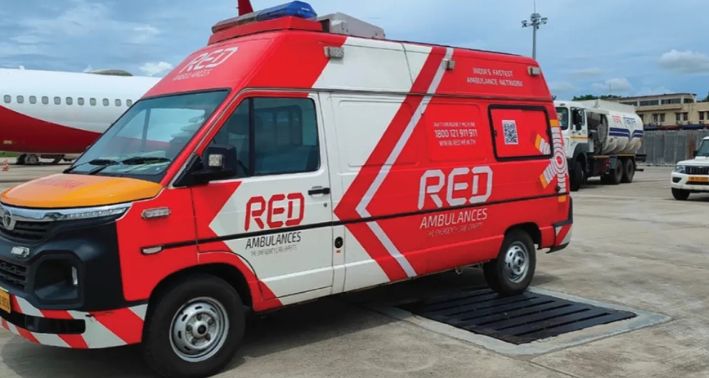Access to timely and reliable medical transport can make the difference between life and death. With a range of ambulance services available in India today — including emergency response units and private medical transport — patients and caregivers often find it difficult to understand which service best suits their needs. This article explores the key distinctions between ambulance services, emergency ambulance services, and private ambulance services, helping you navigate the choices for optimal patient care.
What Is an Ambulance Service?
An ambulance service refers to the transportation of patients using medically equipped vehicles. These vehicles are staffed by trained professionals and come with varying levels of life support systems. Depending on the type of ambulance and the urgency of the case, services may range from simple first-aid transport to fully equipped mobile ICUs.
In India, ambulance services are delivered by:
- Government-run emergency medical services (e.g., 108)
- Private hospitals and healthcare providers
- Independent private ambulance operators
These services aim to ensure patients reach the appropriate healthcare facility safely, efficiently, and in time.
Emergency Ambulance Service: Built for Urgent Response
An emergency ambulance service is activated in life-threatening situations where immediate medical attention is critical. These emergencies may include:
- Cardiac arrests
- Serious road accidents
- Brain strokes
- Severe bleeding or trauma
- Breathing difficulties
Features of an emergency ambulance service include:
- Rapid response time
- Advanced medical equipment such as ventilators, defibrillators, oxygen support, and stretchers
- Skilled staff, including EMTs and paramedics trained to stabilize patients during transport
- Direct coordination with hospitals, ensuring immediate treatment on arrival
In India, dialing 108 connects patients with government emergency ambulance services in most states, offering quick access, especially in urban areas.
Private Ambulance Service: Tailored, Comfortable, and Reliable
A private ambulance service is usually booked in advance and is ideal for:
- Non-emergency medical transport
- Long-distance intercity or inter-state hospital transfers
- Post-surgery travel or hospital discharge
- Regular visits to medical appointments
Private ambulances provide:
- Customizable care options, including Basic Life Support (BLS), Advanced Life Support (ALS), or ICU-on-wheels
- Modern amenities like air-conditioning, mobile stretchers, and seating for caregivers
- Specialty transport options, such as neonatal ambulances or bariatric transport
Private ambulance services are especially popular in metro cities where patients value comfort, timeliness, and one-on-one care during medical transit.
Key Differences Between Emergency and Private Ambulance Services
| Parameter | Emergency Ambulance Service | Private Ambulance Service |
|---|---|---|
| Purpose | Handles life-threatening medical cases | Serves planned or non-emergency situations |
| Availability | 24/7 emergency dispatch | Pre-booked, flexible scheduling |
| Cost | Usually free or subsidized | Paid service with customizable pricing |
| Medical Equipment | Advanced (ALS, ICU) | Varies by requirement (BLS to ICU) |
| Staffing | Trained EMTs and paramedics | Skilled drivers, attendants, optional nurse |
| Common Providers | Government or hospital services | Private ambulance companies or hospitals |
When to Use Which Service?
Understanding when to choose which type of ambulance service is vital for ensuring appropriate medical response:
- Call an emergency ambulance service if someone is unconscious, having chest pain, or bleeding severely.
- Use a private ambulance service for planned hospital visits, patient discharge, or non-urgent yet essential transfers.
- Opt for a general ambulance service for everyday patient mobility needs like physiotherapy appointments or check-ups for senior citizens.
Each type of ambulance plays a unique role in the healthcare ecosystem — one addresses emergencies, the other focuses on comfort and continuity of care.
The Rise of Technology in Ambulance Services
The digital age has enhanced the way ambulance services are accessed and operated:
- Online ambulance booking platforms now allow patients to choose between emergency and private ambulance services with real-time availability.
- GPS tracking in ambulances ensures transparency and fast arrival at destinations.
- 24/7 call centers and mobile apps help in immediate dispatch and support.
- Integrated health records allow hospitals to receive patient data en route, ensuring quicker diagnosis and treatment upon arrival.
These innovations are revolutionizing emergency medical response and are a step forward in making India’s healthcare system more accessible and efficient.
Challenges and Future Outlook
Despite the progress, challenges remain:
- Limited rural access to emergency ambulance services
- Understaffed or poorly equipped vehicles in some regions
- High costs of private ambulance services in urban areas
However, the integration of telemedicine, central dispatch systems, and expansion of private ambulance networks promises a better future. Increased public awareness and government support will further bridge the gap between demand and access.
Conclusion
Choosing the right ambulance service can significantly impact patient outcomes. Whether it’s a life-threatening situation requiring an emergency ambulance service or a planned hospital transfer best handled by a private ambulance service, understanding the options available can save valuable time and ensure quality care.
Informed decisions during a medical crisis are often guided by preparation and awareness. Knowing the type of service that fits your situation — and having quick access to it — could mean the difference between survival and loss.



